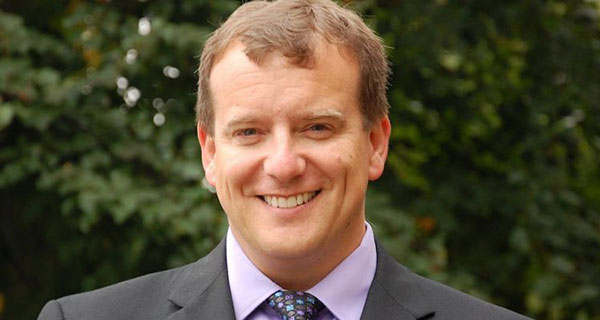Editor’s Note: Troy Media recently interviewed Dr. Chris Simpson, the president of the Canadian Medical Association, as to the role of physicians and national medical associations in addressing health equity and the social determinants of health (SDOH).
Troy Media: You have an interest in the social determinants of health (SDOH) – you’ve been talking about it in your presidency, as have the last few Canadian Medical Association (CMA) presidents. Why does that matter to you?
Simpson: There’s one reason that’s more altruistic and noble than the other, but I’ll give you both.
I grew up in rural New Brunswick, in a town that was a “model” town. It was created because a pulp mill was built there, and there was a hydroelectric dam that basically flooded the entire community and they had to build a new community above it. It was populated with a disproportionate number of teachers and engineers and professionals, and there was a time when I was a kid when it was the community with the highest per capita family income in the country, right in the middle of rural New Brunswick. But around it were very poor rural communities, and the contrast was incredible.
When I went to school we all were together, so you’d have these children of university educated engineers and managers making high wages next to more socio-economically disadvantaged kids. And the contrast, I can remember as a kid, struck me as just absurd. It was almost a caricature of the income gap in Canada.
I didn’t understand at the time what it was, of course, but I remember being very acutely aware that there was something very odd about the dichotomy.
From a healthcare perspective, it occurred to me recently that as a sub-sub-specialist who does high-tech, very expensive care that probably delivers very little incremental value to a small number of people for a very high price and, having been very privileged because that’s always been valued very highly in our society, the fact of the matter is that, increasingly, I realize that I’m not going to be able to do any of that high-tech medicine unless we find a way to better support the larger number of patients who need low-tech, but equally important care.
I’m not going to be able to do my part of things unless we address the social determinants of health as well, because it ties in critically to the sustainability of our healthcare system.
TM: Are you seeing some of that uptake? In the work you do through the CMA, are you seeing the idea of the determinants of health and the importance of it for our patients catching on?
Simpson: Family Physicians, I think, get the message very quickly; they don’t have to be told or directed or instructed, they just inherently feel it.
But if I go to my hospital-based colleagues, if I mention any of this at all, they typically do not see how an appreciation of the SDOH ties into their jobs or how it links into their role in caring for patients. They understand poverty, they understand nutrition, they understand all of that intellectually, but I don’t think they always feel it politically or in their gut as something that is or could be their responsibility as physicians.
TM: What do you think would be ways that we could make physicians aware of their role in addressing the social determinants of health, and make it easier to act?
Simpson: As long as we still have a silo mentality, those kinds of questions are going to be someone else’s responsibility. … We talk about teams, but in hospitals we’re still not there yet. We try to have more interdisciplinary rounds but they’re very difficult to organize.
I like the idea of clinical tools and checklists. The surgical world and the procedural world intuitively get the notion of a checklist with safety in mind. I think you could pull out the same kind of sensibility from people if you said, “ok we’re going to have a checklist that will pull out the social determinants and barriers.” It could be just a list of four or five things, that’s the kind of thing that could tweak the surgical mindset.
In a very insulated hospital environment, if those issues, like inability to pay for drugs, do come to light by whatever means, then the fix is the social worker. They’re right there, you call them up, so you have access to support – it should be an easy gap to close.
TM: So that’s a real-world solution versus an ideal world solution like Pharmacare. I’m wondering what your thoughts are on a first dollar system, with universal coverage removing the necessity for patients to pay for prescriptions at the point of care.
Simpson: The CMA position has been to support some sort of catastrophic coverage. This would perhaps be a good start. But I find the arguments in favour of first-dollar coverage very compelling, personally. I was impressed by the Gagnon report and I love the paper from Danielle Martin and Steve Morgan.
First dollar coverage makes much more sense to me from an effectiveness point of view at the bedside. I’ve seen just a $12.99 dispensing fee dissuade people from filling their prescription. It’s hard enough to get people to take their drugs, let alone having a financial barrier of a few bucks. I’m encouraged by the suggestion and the widespread belief by a lot of people that it can be economically viable to have a first dollar coverage system.
TM: There are two ways a medical association can see itself: As advocating for its members almost uniquely vs. seeing health as our primary goal and a healthy society. What do you see is the value of that conversation?
Simpson: I think it’s critical. (There is a) sign on the wall at the British Medical Association; (that) says something to the effect (that) “We put doctors at the centre of everything we do.” (The CMA) recently went through a rebranding of our mission and values. I argued very strongly that we needed to leap from being doctor-centred to being very explicitly patient-centred and we kind of landed on “Helping doctors help patients” which is fair enough, but it’s sort of that middle ground.
I think our legitimacy in society, which is really going to be the only way we’re ever going to be truly effective as change agents, is going to be determined by whether or not people truly believe that they are our first priority. Not just individual patients, but society at large. The CMA is well on its way to getting there.
TM: One of the things that I’ve been seeing happen lately is a series of articles suggesting that public health professionals are commenting on the economy when they shouldn’t, and that we should stick to our needles. Should we stick to our needles, or is there a role for us to be talking beyond healthcare, to the causes of ill health and the causes of the causes?
Simpson: I see it a little differently than has been expressed by others. I think we need to earn the right to be in that space. We earn the right from the people we serve. So if we have expertise, and our hearts are in the right place, then civic Canada will confer the legitimacy we need to speak from that perspective.
Physicians and their organizations have been brought along reluctantly on too many issues of progressive social change. But now we have an opportunity to provide leadership to support and develop a progressive and healthy society and further cement the trust that Canadians place in us as a profession. The stuff we’re talking about here today – the role of physicians and their organizations in addressing the social determinants of health, actually has us a bit out in front of general society.
The views, opinions and positions expressed by columnists and contributors are the author’s alone. They do not inherently or expressly reflect the views, opinions and/or positions of our publication.



